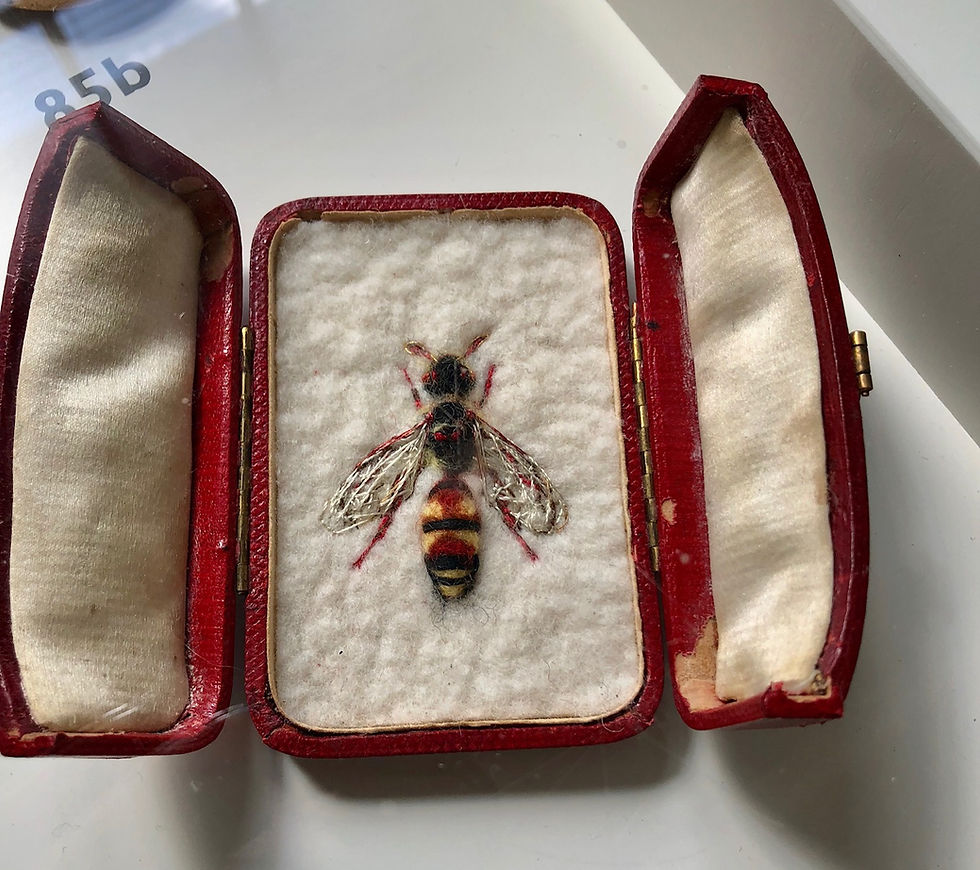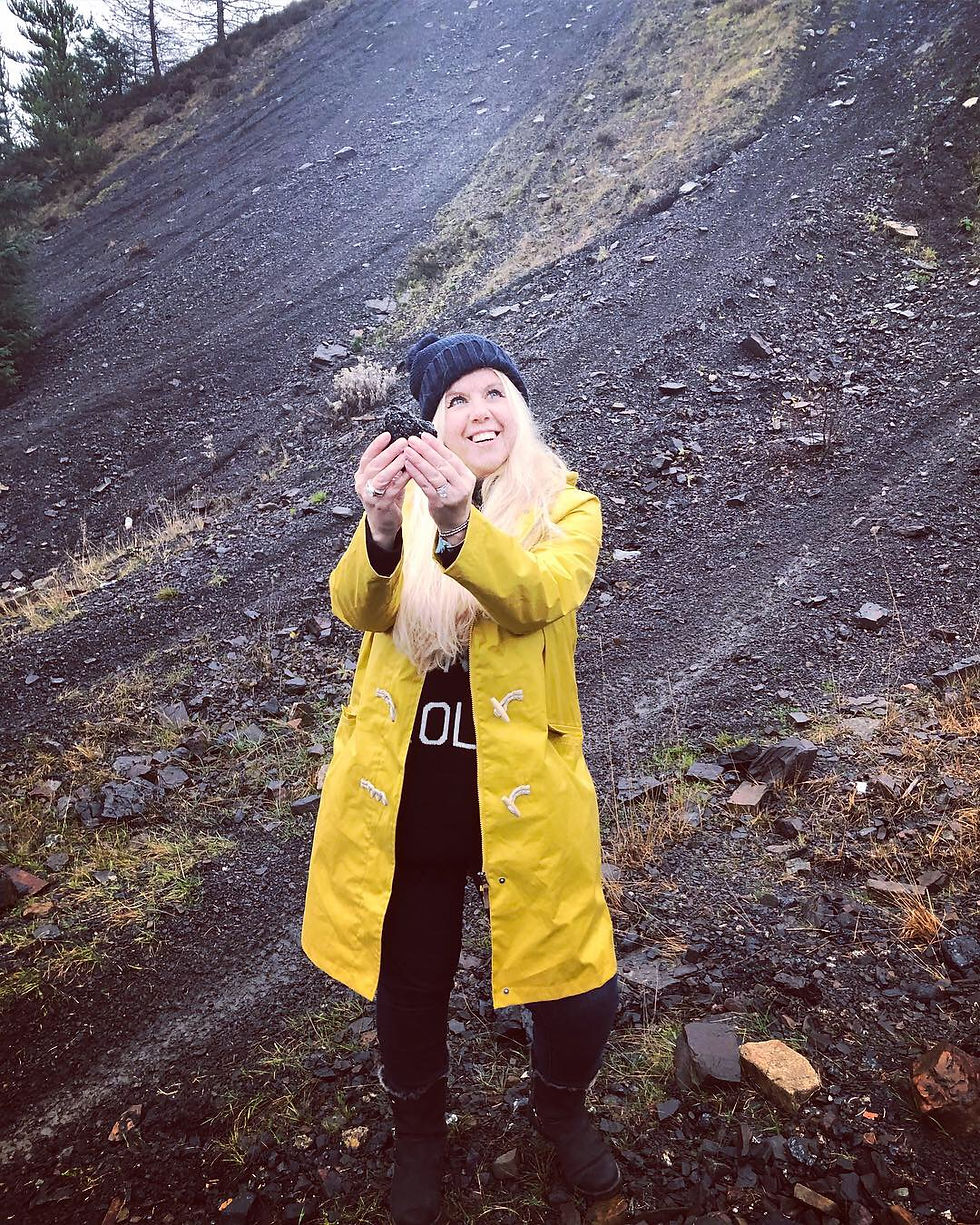The FIFTY BEES adventure – getting a sense of place
- Jenna
- Jan 27, 2019
- 4 min read
Updated: Jan 21, 2020

If you didn’t read the first blog about being part of FIFTY BEES 3, here’s a very quick recap - the sort you’d get at the start of your favourite TV show! (Cue weird Nordic noir music) ;).
I’m writing and singing a song for Lydia Needle’s brilliant arts project that has its next stage exhibition at the Brewhouse Theatre in Taunton in oooh... only 6 weeks time!! ;).
The private view is on Saturday March 9th from 5-7pm and the exhibition then runs from March 11th until May 6th. The song will be pressed to vinyl and you’ll be able to listen to it there, as well as experiencing all the amazing works the other 49 selected artists are creating. Can’t wait!

What’s also really exciting is that the bee Lydia gave me to respond to, the white-jawed yellow-face bee, had a big surprise in store for me.

One of the places Mr and Mrs white-jawed yellow-face can be found, if you look very very closely (they're only 5 millimetres after all), is in South Wales - close to where my father was born. My grandfather mined the land there and I’ve since discovered that my great great grandmother's husband was killed in a mining explosion. When my dad was young, he also worked as a measuring clerk in a local colliery for a year, mapping out the coal face the colliers would then cut. My grandfather and my dad were both singers too.
Uncovering all these connections has blown me away to be honest and since my last blog about it, I’ve been to South Wales to find inspiration for the song lyrics and melody. The visits have also been about getting a real sense of place and to discover more about the landscape and habitat my tiny bee calls home... somewhere that used to be home to my family too.
I’ve been incredibly lucky because on my first visit, Liam Olds offered to be my guide. Liam is the Entomologist who discovered my special solitary bee in the brambles in Cwmclydach Countryside Park and he showed me exactly where he found the tiny one!


Liam’s bleeping brilliant ;). As well as being a Conservation Officer with Buglife, a nature, bee and insect guru and doing wonderful work with the National Museum of Wales, Liam also founded ‘Colliery Spoil B.I.’ - an initiative to raise awareness of the ecological importance of coal tips in the South Wales valleys and the value of their conservation, especially for invertebrates.

Never seen a coal tip up close? Well, you’re not alone! ;) Neither had I until I went on my tour with Liam – and wow, do they create a breathtaking and distinctive backdrop to life in the valleys.


In a nutshell, coal tips are the remains of centuries of mining activity... coal mining waste tipped on the sides of the valleys, creating a powerful visual legacy.


After the heart breaking Aberfan disaster in 1966, when a coal tip collapsed above the village tragically killing 144 people including 116 children, many of the coal tips were understandably cleared.
Others were left undisturbed however and over decades, nature has slowly but surely returned to these mounds of coal debris to create a new home for bees, butterflies and hundreds of other insects and bugs. Last year, Liam found an amazing 816 different types of species on the coal tips in and around the area we explored.



Former coal mines, like the Cambrian Colliery where the Cwmclydach Countryside Park now sits, were also cleared and an area of outstanding natural beauty was created by human hand – planting hundreds of trees on top of the “blackened scar" and devastation of May 17th 1965, when 31 men lost their lives in a pit explosion. You can read more about what happened here.


With Liam's help, I got a real feel for a place that’s been marked by industrial drive, hardship, tragedy, change, hope and resilience. We drove through ex-mining towns, climbed the coal tips (wow I’m unfit ;)), breathed in the landscape, collected some ‘lucky coal’ (big thanks to Liam who picked out this piece that's still in my coat pocket ;))

... and the contrasts hit me hard. From the tightly packed rows of ex-miners cottages, to the beauty of the running streams and deep green trees of Clydach, where the two different worlds of community town and breathtaking countryside join together, separated by mere minutes of walking.


Then, there are the sweeping valley views (it was just too foggy to photograph the aerial views on this occasion) contrasting with the dense St Gwynno Forest behind them...

... and the memorials that stand are hugely emotional, serving as a tribute and lasting reminder of the lives that were lost in, and because of, working conditions we can’t ever truly imagine.
My dad summed it up when he explained to me:
“In the area, men worked three shifts around the clock. Some never saw daylight in the Winter, except on weekends. It was a very hard life. Mining was a killer and men died young. Few reached 65 and the disasters will never be forgotten”.

Despite everything though, there is a hope here that shines through like Summer light. There’s the genuine warmth of the people and the sight of nature returning to these tips... the charred beauty of the dusty coal spoils upon which new life has started to grow, connecting the past, present and future.
It’s a truly incredible place.

You can read more about the colliery spoils at https://collieryspoilbiodiversity.wordpress.com, the initiative Liam has founded. Follow @somersetcool on Twitter and Instagram for more project updates and the Fifty Bees social channels too.

Comments